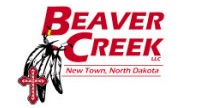Information
-
Document No.
-
Audit Title
-
Client / Site
-
Conducted on
-
Prepared by
-
Location
-
Personnel
Executive Summary
1. Comittment.
-
There is a written workplace rehabilitation policy and procedures that is current, dated and signed by the CEO or other responsible officer<br>Published and displayed statement of policy<br>Records of staff induction<br>Signature<br><br>
-
Awareness of all workers in relation to workplace rehabilitation<br>Policy statement or statement of commitment displayed at the workplace - view appropriate display locations eg reception area, lunch rooms, 1st aid room, meeting areas, electronic mail, organisational newsletters, electronic bulletin boards etc<br>
-
Policy and procedures are part of induction.<br>View induction material.<br>
-
There is evidence of ongoing education related to workplace rehabilitation.<br>Educational materials/methods eg minutes of staff meetings, posters, newsletters, memos.<br><br>
-
Trained Workplace Rehabilitation Coordinator nominated.<br>Name of workplace rehabilitation coordinator shown on policy.<br> <br>
-
Policy and Procedures available in a variety of formats for workers from non-English speaking backgrounds<br>Copy of translated policy and procedures/information, evidence that an interpreter has been engaged where required.<br>
-
The organisation has identified person/organisation that can provide advice on all aspects of injury management<br>Documents showing contact details for persons or organisations used for injury management matters; records of previous advices received; memos to staff; employee assistance program documentation.<br>
-
The injury management system is reviewed regularly<br>Records of reviews, verification of documented changes, proof of corrective action taken is documented, internal memos regarding the outcome of the review; revised policy or procedure documents that reflect the outcomes of the review.
-
Workers or their representative are involved in the development and review of the workplace’s workplace rehabilitation system.<br>Documented consultative arrangements; samples of working papers that show worker involvement; minutes of the workplace’s safety committee or relevant committee meetings detailing consultation; minutes that record consultation with workers, or worker representatives.
-
<br>Workers are able to nominate a person to support and assist with injury management matters. Workers are made aware of this arrangement.<br>Case notes show worker was made aware of this by provision of information contained in induction manual, documented issue resolution procedures; workplace agreements; other documented arrangements; employee assistance program pamphlet.
-
In the event of a dispute the worker is made aware of the grievance mechanism/process.<br>A documented grievance mechanism is part of the workplace rehabilitation policy and procedures; documented evidence that injured workers are made aware of the procedure at the time of disputes.
2. Risk Management.
-
The organisation has a documented risk management program to identify injuries that occur regularly and to reduce the risk of subsequent injury of that type.<br>Incident reports/investigation reports and forms; examples of risk controls implemented following workplace injury, case notes on injured worker rehabilitation file.<br>
-
Appropriate first aid facilities are provided as per the Advisory Standard and/or arrangements for speedy transfer to a medical facility<br>Documentation/information/policy indicating to workers location of first aid facility, compliance with standard and arrangements for transfer to medical facility – could be on bulletin boards, emails, HR policy etc<br>
-
Staff trained in first aid procedures as per the Code of Practice<br>Copies of certificates of relevant staff qualifications on file.
-
All staff trained in procedures in case of accidents or emergencies and procedure to report injuries.<br>Documented procedures sighted.
3. Confidentiallity.
-
Appropriate safe keeping employed for all files, separate to human resource file<br>Rehabilitation file kept separate from human resource file during the life of the claim; if kept in human resource file after claim finalised should be stored in sealed envelope marked confidential.
-
Workplace rehabilitation coordinator obtained injured worker authority to liaise with treating doctor<br>Authority on injured worker’s file.
4. Case Notes.
-
Case notes on rehabilitation file.<br>
-
All entries signed; if electronic to be printed out, all entries initialled and each completed page signed.
-
Decisions are clearly stated in case notes.
-
Reasons for decisions are clearly stated in case notes.
-
Actions are clearly stated in case notes.<br>
-
Case notes provide a chronological, accurate account of all interactions.
5. Early Contact.
-
Initial contact with the injured worker to advise them of entitlements, responsibilities and procedure.<br>
-
Expectations of recovery time frames discussed with treating doctor.
6. Return to Work Process
-
Injury Management Guide for Qld employees has been provided to the injured worker and discussed.
-
Suitable Duties Plans developed in consultation with treating medical practitioner.<br>Signature on suitable duties plan, record of case conference or in case notes.<br>
-
Suitable Duties Plans developed in consultation with injured worker.<br>Signature on suitable duties plan, record of case conference or in case notes.
-
Suitable Duties Plans developed in consultation with supervisor or line manager.<br>Signature on suitable duties plan, record of case conference or in case notes.
-
Suitable duties are goal focussed with tasks and restrictions considered in development.
-
Suitable Duties are time limited and have a review date.<br>
-
Arrangements for engaging rehabilitation service providers are documented.<br>
7. Rehabilitation Plan.
-
<br>Planning identifies actions and persons responsible.
-
The plan is reviewed regularly.
8. Rehabilitation Strategies for Long Term Injured Workers.
-
Redeployment considered when appropriate.<br>Offer of redeployment on injured worker file.
-
Retraining offered with realistic job prospects.<br>Offer on file.
-
3,6,9 and 12 month process runs concurrently with the return to work with H.R. Involvement
-
QComp Return to Work Assist team involved by referral.
9. Evaluation.
-
The rehabilitation of individual workers is evaluated by the workplace rehabilitation coordinator and other parties.<br>
-
Reviewers/auditors are independent of the area being audited.
-
Deficiencies highlighted in internal review/audit are addressed and monitored for improvement. Documentation shows corrective action has been implemented.
-
The system of workplace rehabilitation is reviewed/audited regularly and the results documented.<br>Reports noting performance on a range of indicators such as cost, duration, return to work status, minutes of meetings memos with senior management.<br>









